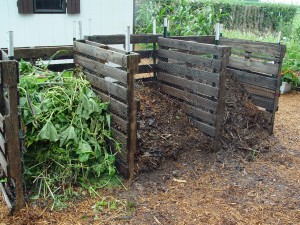Black Thumb? I Don’t Think So
September 1st, 2014
Two reasons explain why non-gardeners are non-gardeners (or ex-gardeners).
One is lack of time, the reason behind most every non-something.
The other is lack of confidence. Soil rookies either tried and failed, or they don’t bother because they’re pretty sure they’d fail if they did try. (Homer Simpson: “Trying is the first step toward failure.”)
Their conclusion: “I have a black thumb.”
Take heart, black-thumbers. This is one “malady” that’s curable.
In fact, I don’t even buy the notion that people either have a green thumb or they don’t.
We’re not born with some innate talent to sidestep downy mildew on impatiens or grow 2-pound tomatoes. We learn gardening by reading, by watching and especially by doing.
Experienced gardeners will tell you that most of their growing know-how can be found in their compost pile – specifically, what went wrong to earn those dead $15 perennials a home there.
If you can learn something from each struggle or failure, little by little you learn not only the general mysteries of plant-growing but the vagaries of your particular yard. Ultimately, you become a good gardener.
Look at your dead aster not as a reason to give up but as important progress in growing the next one superbly (or the one after that if you specialize in remedial learning).
I’ve found that some of the best gardeners are ones who had a mom or dad or grandmother or grandfather who got them interested in gardening when young.
These people didn’t inherent the 2-pound-tomato gene. They were blessed with an early interest that gave them a big head start over those just getting started in their 30s and 40s.
So if you’re in the latter group, it’s not hopeless. You just have something catching up to do.
The annual post-Labor-Day “fall-is-for-planting” time really is a good time to both take a new stab at your yard and to move clumsily placed plants that you’re in the process of killing.
Six tips to fast-forward your way out of black-thumbness:
1.) Good soil. A common thread of successful gardeners is that almost all of them have compost piles. They know the value of organically rich, well drained, loose soil, and they recycle “fuel” from around the kitchen and yard to make that happen.
If you don’t have a compost pile or two, fall is a good time to start one. Otherwise, improve your lousy clay with purchased compost or falling leaves or mushroom soil or whatever organic gold you can get your paws on.
2.) Observe your site. You might not care where the sun hits at 2 p.m., but your plants do. Plants survive and thrive best when they’re in a site that suits their needs.
Most yards have a variety of conditions that create “microclimates” – pockets of varying temperature, light, wind and moisture conditions that can make a life-or-death difference to plants.
Get to know these before you buy and plant. Pay attention to factors such as where it stays wet for days after a rain, where the snow melts first in winter, where the sun hits at 10 a.m. vs. 2 p.m., and where the wind blows piles of leaves in fall.
3.) Match plants to the site. Once you know what hand you’ve been dealt, match plants to your particulate microclimates. This is a lot easier than trying to change your conditions to match the plants you want.
Take time to do the homework. It’s cheaper in the long run than killing off 50 percent of what you plant in order to learn by trial and error.
George’s Plant Pick of the Week series includes a worthy choice on Pennlive every Thursday during the growing season. An archive of more than 300 Plant Picks is posted on my Plant Profiles page.
I’ve also got a new book coming out in October 2014 called the “Pennsylvania Getting Started Garden Guide” (Cool Springs Press, 2014) that features the 170 best landscape plants for Pennsylvania, including details on where to plant each.
And I’ve got a detailed, 18-page “George’s Survivor Plants for Central Pa.” plant list available for a $5.95 download on my website.
Master Gardeners, garden-center staffers and even your “green-thumb” neighbors are other viable plant-homework resources.
4.) Test the waters. Even if you think you’ve done a perfect plant-to-site match, hedge your bet and start small.
If, for example, you think coneflowers might be a good choice for your sunny border, try a few, and see how they do for a year or two instead of buying three dozen of them right out of the gate.
5.) Be ready to re-observe and adapt. Sites change over time. What used to be sunny becomes shady as a tree grows, or what used to be dry is now a periodic stream since that home was built up the hill. Or maybe you just goofed on your first observation attempt.
Keep watching those clues. See how your plants perform to either confirm or refute your suspicions about each site.
Even smarty-pants horticulturists don’t get everything right on the first try. Gardening is always part guesswork.
6.) Be ready to transplant. When you see that a plant isn’t happy, try to figure out why. If it’s site-related, by all means move it to a more suitable spot ASAP.
Most plants move easier and more successfully than people think. Even Master Gardeners will tell you they’ve moved most every plant in their garden three times before they “got it right.”
Early spring and early fall are two good times to do this deed.
The sooner you realize you guessed wrong and do something about it, the better.
Keep the moved plant consistently damp until the ground freezes. If it does croak, remember, it’s a lesson, not a failure.










